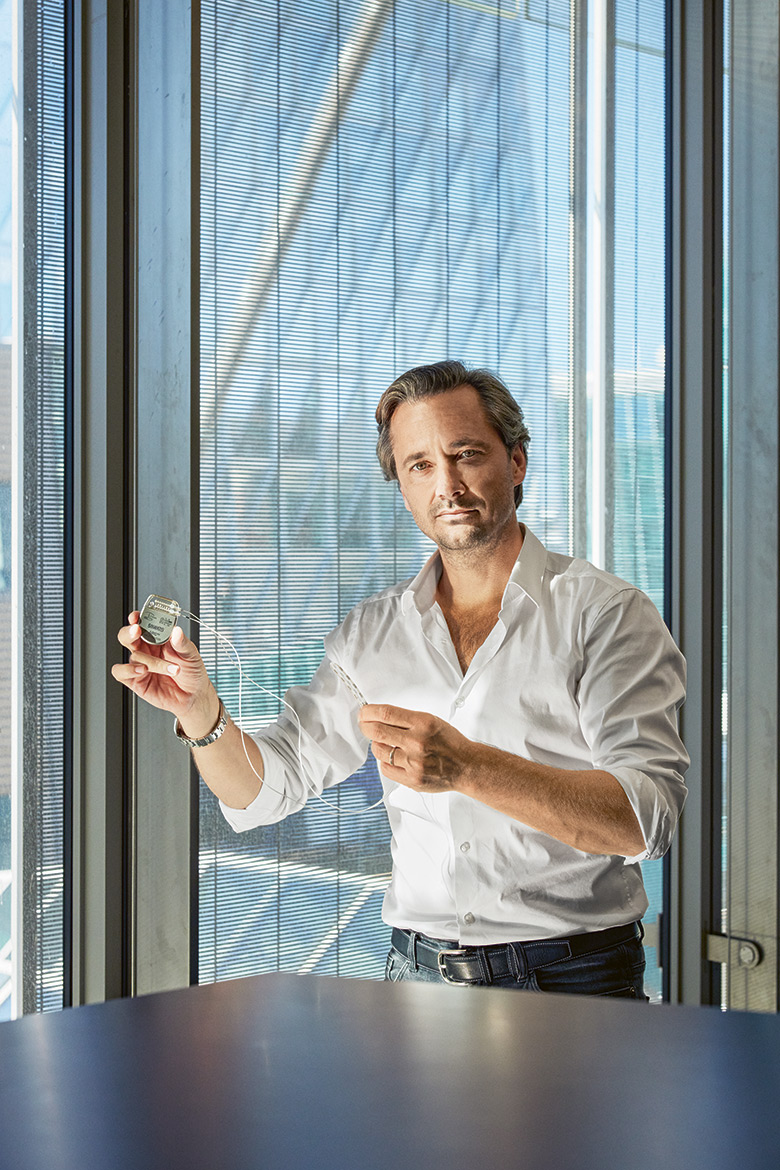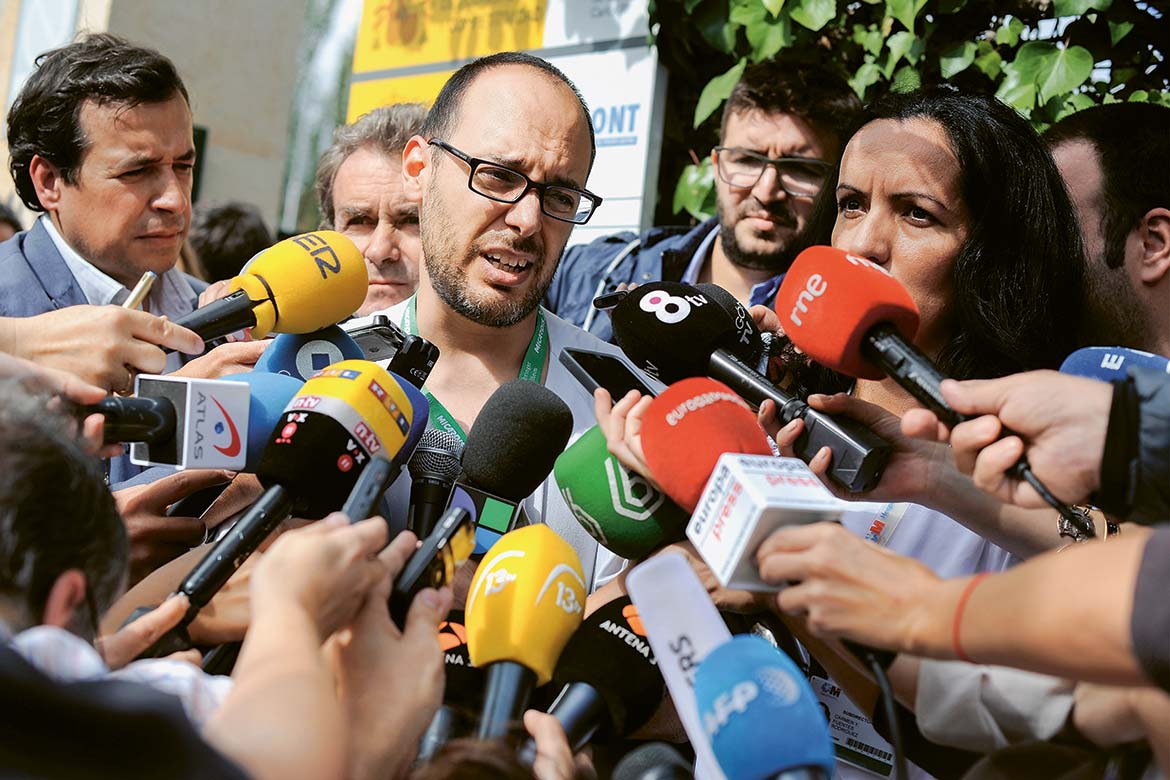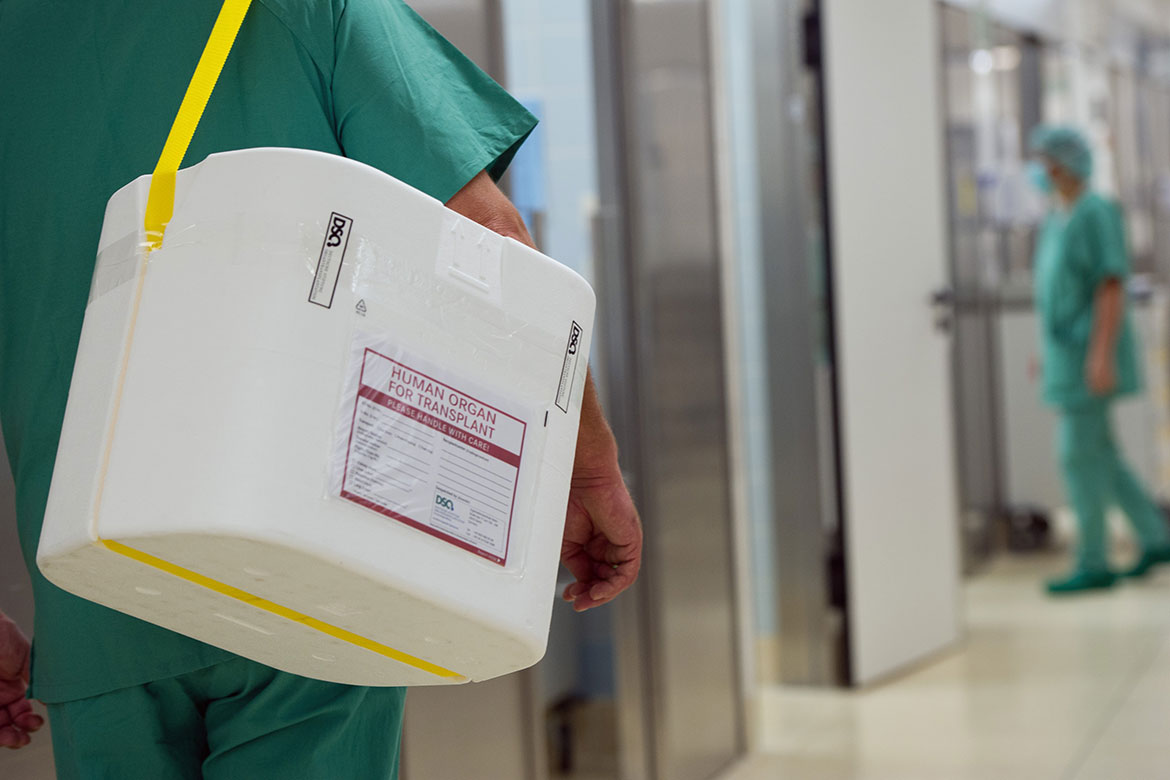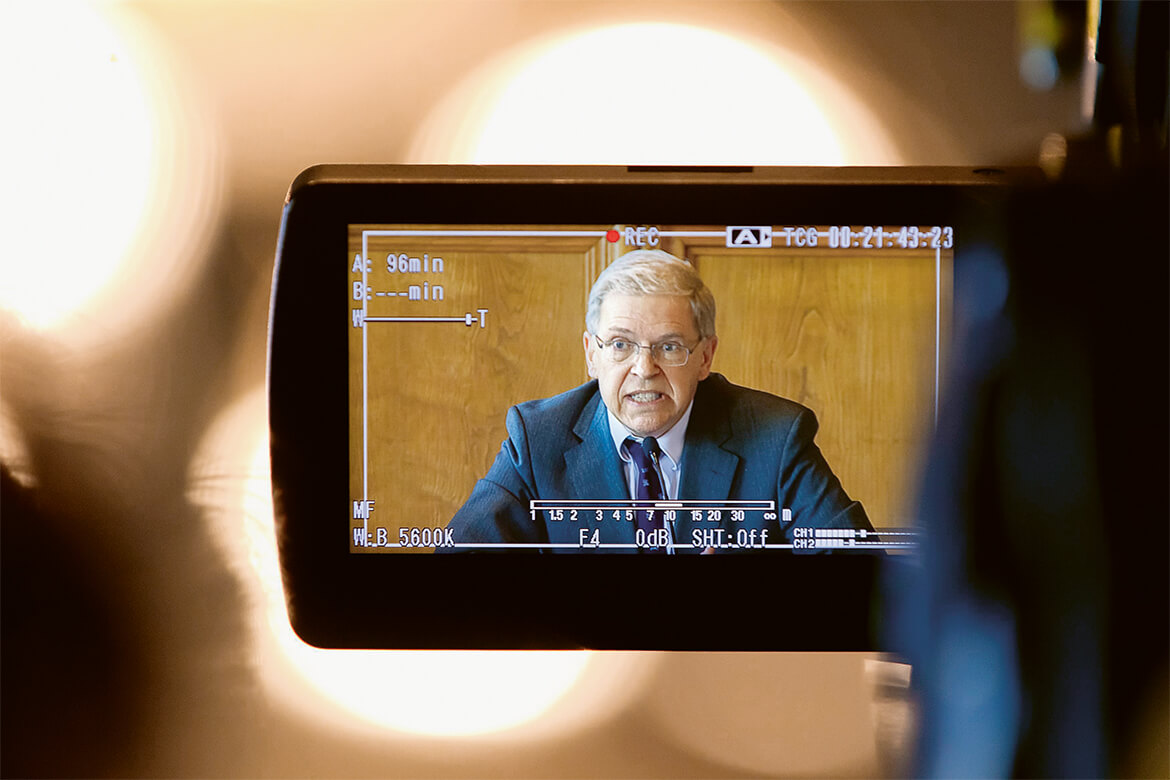Feature: The limits of brain research
Getting back on their feet
The neuroscientist Grégoire Courtine has developed an implant that can stimulate the leg muscles of people suffering from injuries to the spinal cord. This determined pioneer of neurorehabilitation refuses to be deflected from his chosen path.

Taking the least bureaucratic route to meet patients' expectations, Grégoire Courtine carries out some of his trials with macaques in China and markets his technology with a start-up created in the United States. | Photo: Sébastien Agnetti
Grégoire Courtine arrives with a nonchalant, engaging air, exuding self-confidence. His shoulder-length hair streaked with grey and his three-day beard give him the aura of an adventurer. Jazz is playing softly in the background in his office at the Biotech Campus in Geneva. He’s stressed out and asks us to be patient with him a little. “I’m in the final stages of two big research applications. The deadline is already this afternoon”, he says apologetically.
A few minutes later, he starts telling us about his early enthusiasm for the sciences. When he was a child, he used to spend nights on end with his father, looking at the stars through a telescope. This experience was one of the things that led him to decide on a career as an astrophysicist. When he came to choose his subjects at university, he took mathematics and physics. But during his studies, he sometimes went climbing together with a lecturer in the neurosciences who told him about the complex interactions between the brain and the musculoskeletal system and about what happens in your head when you’re holding on to a rock face with your fingers and toes. “I soon developed an incredible fascination with neurological processes”, he recalls. So, in his doctoral thesis, he decided to combine his old and new passions, and researched into the neurological basis for astronauts who have to regain their ability to walk after being on a space mission.
When Courtine presented the results of his doctoral thesis at a conference in Stockholm in 2003, the audience included Reggie Edgerton, a professor of neurobiology at the University of California in Los Angeles and a pioneer in the development of therapies for injuries to the spinal cord. Courtine had read many of Edgerton’s studies, and so went to speak to him. “Reggie simply said: ‘Young French man, I don’t have a clue what you’re saying, but I like your research!’”. Three months later, Courtine flew to Los Angeles to work as a postdoc in Edgerton’s lab. It was there that he first came into direct contact with paraplegics and tetraplegics. “Meeting people who could not move any more was something that left a lasting impression on me”, he says.
Complementary research partners
After three years in the USA, Courtine returned to Switzerland in 2008. He was appointed as an assistant professor at the University of Zurich and set up his own research group. He soon enjoyed several successes. For the first-ever time, his team succeeded in rehabilitating rats with spinal cord injuries. After months of training, the animals were able to move again, supported first by a conveyor belt and later by a robot that carried part of their body weight. Even before they had published their research, the then director of EPFL, Patrick Aebischer, brought him to Lausanne. Aebischer is a medical doctor and a neuroscientist himself, and he put Courtine into contact with the neurosurgeon Jocelyne Bloch, who was researching and practising at the Lausanne University Hospital (CHUV). “It was a perfect match from the start!”, says Courtine. “We work in a very complementary way; we’re ideally suited and not in competition at all”.
Courtine’s collaboration with Bloch opened up new avenues. Until then, he had only researched his technology using models: zebrafish, mice, rats and macaques. But now he was able to risk the leap to humans. In October 2016 at CHUV, Jocelyne Bloch implanted the system developed by Courtine’s group into a patient for the first-ever time. This comprised a pacemaker in the abdomen and a band with 16 electrodes at the lumbar vertebrae, a little below the damaged area of the spinal cord. There lies a kind of second control centre for steering our legs, and it functions largely independently of the brain. After an injury, this centre is traumatised and inactive. But it can be reactivated with the help of electrical impulses. Courtine and Bloch published a video about this study. Their patient was David Mzee, who had suffered a sports accident in 2011 and had since been suffering from a partial spinal cord injury and was unable to walk. But in the video, he gets up from his wheelchair and begins to walk with a walking aid. These images went around the world, and the media everywhere reported on their breakthrough.
Across the world, some 250,000 to 500,000 people every year are affected by spinal paralysis. A study conducted in 2012 by Swiss Paraplegic Research estimated the number of paraplegic adults in Switzerland to be 6,000. Patients are always desperately hopeful of regaining some form of mobility through surgery, implants and hard training. “We receive between 20 and 30 requests every day from people wanting to participate in our clinical trials”, says Courtine. “Meanwhile, we’ve got thousands of patients on our waiting list”. This is why he is keen to market their technology as quickly as possible. To this end, Courtine founded the start-up company Onward in 2014. It owns over 300 patents that have been developed in his lab. Today, it operates offices in Lausanne and Boston and has 80 employees. Its market capitalisation was almost EUR 500 million. To this day, Courtine remains a co-owner and advisor to Onward. He sees no conflict of interest. “In research, we develop the basic knowledge, while the company has the capacity to bring the innovation to the marketplace as quickly as possible – so why shouldn’t we work closely together?”
The hurdles of strict regulation
Animal models remain crucial to the further development of their system. In 2018, the French-Swiss daily newspaper ‘24 heures’ reported that Jocelyne Bloch was flying to Beijing several times a year and was inserting brain implants into macaques with damaged spinal cords to help them walk again. Such experiments are heavily criticised by animal protection organisations such as the Swiss League against Animal Experimentation (LSCV), which is based in Geneva. Courtine has an explanation, however: “We are engaged in a close research collaboration with Chinese partners – this is why we’ve also been operating in China”. He is convinced that the exact same experiments would also have been possible at the University of Fribourg, where most of his group’s experiments with macaques take place. However, he does admit that they are much more complicated to undertake in Switzerland because the animal welfare provisions are less rigorous in China. He sees Switzerland’s strict regulations primarily as an obstacle to biomedical innovation. And he insists that his team is already doing a lot today in steadily reducing the number of animals needed for experiments.
But does this pioneer of neurorehabilitation have time to do anything other than his research? “Absolutely”, he assures us. He plays the piano, does a lot of sports, he often cooks, and he spends time with his wife and two children (with a third already on the way). But he doesn’t sleep much. “Five hours a day are enough for me. Maybe I’ll have a short life because of it, but at least it’s a life full of fun”, he says. First and foremost, science is his passion. “It only feels like work when I have to write grant proposals”, he says, laughing, with a glance at his Rolex to signal that it’s time to end our conversation. There are still 30 minutes left before the two applications have to be handed in.




